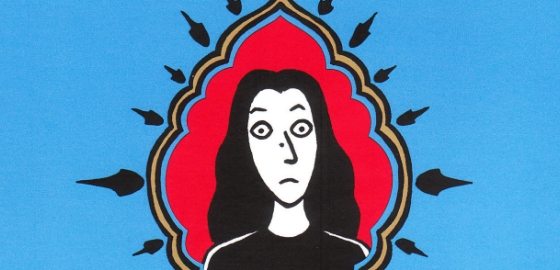Persepolis
Regions: France

Persepolis is an autobiographical comic by Marjane Satrapi originally published in four volumes in the French publication L’Association from 2000 to 2003. Using high-contrast black and white inking with a heavy line and Expressionist qualities, the series depicts Satrapi’s childhood in Tehran during the Islamic Revolution. The series details Satrapi’s childhood as she struggles to acclimate to fundamentalist rule while being raised by progressive, secular-minded parents. Persepolis also recounts Marjane’s emigration from Iran to Austria at age fourteen. After facing heartbreak, homelessness, and severe medical issues, Marjane eventually returns to Iran, where she initially faces clinical depression. Eventually Marjane attends art school, marries, and soon divorces before emigrating a final time to Paris. In addition to documenting Marjane’s maturation from child to adult during a time of political and social upheaval, Persepolis also recounts Satrapi’s relationship with her family, including most notably her mother Taji, her father Ebi, her uncle Anoosh, who was imprisoned and tortured for his anti-fundamentalist beliefs, and her grandmother, who died shortly after Marjane emigrates for the final time. Despite its political criticism and depiction of painful autobiographical memories, Persepolis has been praised for its wit and humor.
In 2004, an English translation was published in two volumes: The Story of a Childhood and The Story of a Return. In 2007, the two volumes were then consolidated in The Complete Persepolis. Satrapi’s translated work received high praise and popular attention in the United States, appearing, for example, on TIME’s 2003 list of Top 10 Comics. Such praise and popularity indicates Satrapi achieved her goal, noted in her introduction to the American edition of The Complete Persepolis, of writing the graphic novel in order to explain Iran to the Western world. Satrapi has speculated that she likely cannot return to Iran due to Persepolis’s critique of Iranian politics and leaders. Persepolis has been widely translated into many different languages.
In 2007, Persepolis was adapted to a feature-length animated French film of the same title. Persepolis the film was co-directed by Satrapi and Vincent Paronnaud. The film adaptation retains much of the original comics’ aesthetic style of heavy black and white inking. The film received high critical praise and was awarded the Jury Prize at the Cannes Film Festival, where it debuted, and was nominated for the 2007 Academy Award for Best Animated Feature.
In 2009, Satrapi authorized the online publication of Persepolis 2.0, a digital comic that recounts the election of former Iranian President Mahmoud Ahmadinejad. Persepolis 2.0 uses original drawings from Satrapi’s Persepolis with new text “edited” by authors credited only as “Payman” and “Sina.”
Since its publication and filmic adaptation, Persepolis has been praised for its positive portrayal of a female protagonist and nuanced depiction of secular Iranians. Persepolis is widely considered a staple in the genre of autobiographical comics.
–Corey Efron


